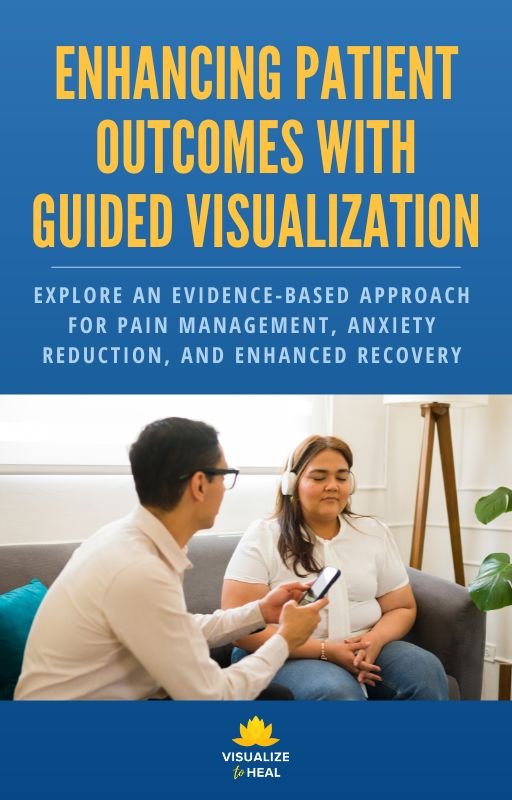
Free guide: UNLOCKing THE HEALING POWER OF GUIDED visualization
Discover An Essential tool for Patient care toolkit
EMPOWER YOUR PATIENTS’ HEALING JOURNEY
Are you looking for a groundbreaking approach to enhance patient care, reduce recovery times, and elevate patient satisfaction?
You're not alone.
The quest for integrative, holistic healing techniques is at the forefront of modern medicine, paving the way for innovations that complement traditional treatments. This is where the transformative power of guided visualization comes into play.
We’ve created a free guide to demonstrate how guided visualization can be added to your patient care toolkit.
Discover more below!
what you’ll learn in the guide
8 Evidence-Based Benefits
Discover the evidence-based ways that guided visualization can help patients heal & feel better mentally & physically through health challenges
6 Application Examples
Learn how guided visualization can complement and seamlessly integrate with several existing treatments, backed by research.
How it Adds Value
Learn five key ways that adding guided visualization to your healthcare toolkit could contribute to the success of your practice.
How to Add it to Your Practice
It’s essential to understand how to integrate new healing modalities into your practice. We’ll share how to do it in this guide.
Key Elements of Visualization:
Several evidence-based elements make guided visualization an effective complementary modality. Learn them here.
Real Success Stories:
Discover firsthand accounts of how guided visualization has transformed patient care, offering a glimpse into its potential impact.

get your free guide on how to enhance patient outcomes with guided visualization
Learn how to add a key complementary tool to your patient care toolkit
Guide FAQs
-
This guide is for healthcare providers like integrated physicians, holistic health coaches, palliative care nurses, acupuncturists, physical therapists, and anyone else who wants to support patients through health challenges.
-
The guide demonstrates that guided visualization is an evidence-based, complementary approach, detailing studies and historical usage that underscore its effectiveness in healthcare. It explains how guided visualization has been recognized by fields such as psychology, integrative medicine, and even covered by certain healthcare benefits, showcasing its scientific backing and growing acceptance in the medical community, with examples.
-
This guide shares 6 ways to incorporate guided visualization into patient care situations, with examples in studies. One specific application detailed is preoperative preparation, where guided visualization is used to reduce a patient's anxiety and fear before surgery. By guiding patients through relaxing visualizations or positive affirmations, healthcare providers can help patients achieve a state of calmness and positivity, potentially leading to better surgical outcomes.
-
Yes! The key steps to adding guided visualization, from initial research, to guiding patients on how to visualize, to evaluating effectiveness are covered.
-
Understanding the mechanism—how visualization influences the brain, nervous system, and physiological responses—is crucial for doctors considering its recommendation. This guide will cover the research on how guided visualization works and its effects on mental and physical health.
-
It's important to know if there are circumstances under which guided visualization should not be used, or if there are any potential side effects. The guide will cover these topics and share whether there are people who should avoid this type of visualization and why.
-
The guide covers 5 key ways that offering guided visualization to patients can add financial value to a healthcare practice.
-
It offers practical steps for integrating guided visualization into practice. Additionally, the guide mentions Visualize to Heal's library of guided visualizations, suggesting a direct resource for high-quality, evidence-based content to support healthcare providers in adopting this therapeutic tool.



